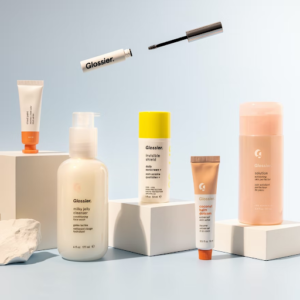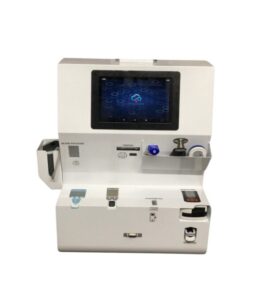Wondering How Companies Handle Product Safety? Find Out Here
When you’re shopping for a new product, it’s important to know that it is safe. Unfortunately, there are some companies out there that don’t take product safety seriously. In this blog post, we will discuss how companies should handle product safety and what you can do to make sure you’re buying a safe product.

Product safety is a top priority for any company
Any company that sells products has a responsibility to ensure that those products are safe. This means that product safety must be taken into consideration at every stage of production, from design to packaging to shipping. There are many ways to make sure a product is safe, and companies should use all available resources to make sure their products meet or exceed safety standards.
1. Test products for potential hazards
One way to ensure product safety is to regularly test products for potential hazards. This can be done in-house or by an independent third party. Testing should be conducted on all new products and any existing products that have been significantly changed. Products should also be retested periodically to make sure they are still safe. This means that companies need to have a good understanding of the potential hazards associated with their products and how to test for them.
There are many different types of product safety tests, but some common ones include:
– Drop tests: These tests involve dropping a product from various heights to see if it breaks or if any parts come loose.
– Impact tests: These tests involve hitting a product with an object to see if it breaks or if any parts come loose.
– Chemical testing: This type of testing is used to identify any dangerous chemicals that may be present in a product.
– Electrical testing: This type of testing is used to identify any potential electrical hazards in a product.
2. Use metal detectors and check weighers
Another way to ensure product safety is to use metal detectors and check weighers. Metal detectors can be used to identify any small metal objects that may be present in a product. Checkweighers can be used to identify any products that are the wrong size or weight. This type of testing is often used for food products, but it can also be used for other types of products. These machines can take your safety to the next level as their combination checkweigher with a metal detector can eliminate any physical, chemical, or biological hazard. Using metal detectors and check weighers is a good way to catch potential hazards before they reach consumers. However, these devices are not foolproof and they should not be the only method of ensuring product safety.
3. Educate employees about product safety
It is also important to educate employees about product safety. Employees should be trained on how to identify potential hazards and what to do if they find one. They should also be aware of the company’s policies and procedures for reporting potential hazards. This type of education can help to ensure that employees are doing everything they can to keep products safe. Also, by educating employees about product safety, you can help to create a culture of safety at your company.
4. Have a plan for dealing with product safety issues
No matter how hard you try, there is always the possibility that a product could be unsafe. That’s why it’s important to have a plan for dealing with product safety issues. This plan should include procedures for identifying and reporting potential hazards, as well as procedures for recalling products if necessary. Having a plan in place can help to ensure that you are prepared to deal with any product safety issues that may arise.
5. Make sure you conduct X-ray inspections
It is important to make sure you conduct X-ray inspections of your products. X-ray inspection can help to identify potential hazards that may not be visible to the naked eye. This type of testing is often used for food products, but it can also be used for other types of products. Conducting X-ray inspections is a good way to catch potential hazards before they reach consumers. For example, if a product contains metal objects, they will be visible in the X-ray image. This can help you to identify and remove the hazard before the product reaches consumers.
6. Keep up with the latest product safety news
It is also important to keep up with the latest product safety news. This can help you to stay informed about new dangers that may be present in products. It can also help you to learn about new product safety regulations that may be put in place. Keeping up with the latest product safety news can help you to make sure your products are as safe as possible. Additionally, it can help you to avoid potential fines or penalties if you are not in compliance with new regulations.
7. Use product safety labels
Another way to ensure product safety is to use product safety labels. These labels can help to identify potential hazards that may be present in a product. They can also help you to determine if a product is safe for use. Product safety labels should be used on all products, regardless of whether they are intended for use by consumers or not. Additionally, it is important to make sure that employees are trained on how to read and understand these labels. This will help to ensure that they are able to identify potential hazards and take the necessary precautions.
8. Ingredients should be stored the right way
Ingredients should be stored the right way to help ensure product safety. For example, ingredients that are flammable should be stored in a cool, dry place. Additionally, all ingredients should be clearly labeled so that employees can easily identify them. This will help to ensure that they are used correctly and that potential hazards are avoided. Also, by storing ingredients properly, you can help to extend their shelf life. This can help to reduce the chance of them becoming unsafe due to expiration.

Product safety is important for any company. There are many ways to ensure product safety, but these eight tips are a good place to start. By following these tips, you can help to ensure that your products are safe for consumers and that your company is in compliance with all relevant regulations. Additionally, you can help to create a culture of safety at your company by educating employees about product safety and having a plan in place to deal with potential hazards.
Thanks for reading! We hope this gives you a better understanding of how companies handle product safety. If you have any questions or concerns, please feel free to contact us.






